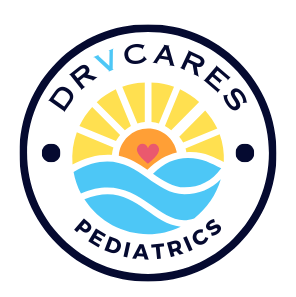A Reminder to Moms to take care of themselves.
Today is February 4, 2022 and it also happens to beWear Red Day!
Wear Red Day started in 2004 as a day to bring awareness to Cardiovascular Disease in Women.
Did you know that Cardiovascular disease is the #1 killer of women? So many people don’t realize this. They think it’s cancer, but the reality is that heart disease claims the lives of 400,000 women each year – that is about 1 per minute 😥
So today, I wanted to reach out to you, woman to woman to remind you of some very important facts.
1. Young Women can Have Heart Disease – In women 20 years and older, nearly 45% have some form of cardiovascular disease and less than 50% of women entering pregnancy in the United States have good heart health.
2. Cardiovascular disease is the No. 1 killer of new moms -It accounts for over a third of maternal deaths. Black women have some of the highest maternal mortality rates.
3. Pregnancy is a risk factor – 10% to 20% of women will have a health issue during pregnancy, and high blood pressure, preeclampsia and gestational diabetes during pregnancy greatly increase a women’s risk for developing cardiovascular disease later in life. (This is why prenatal care is so important! So keep those appointments!)
4. Menopause – Going through menopause does not cause cardiovascular disease, but the approach of menopause marks a point in midlife when women’s cardiovascular risk factors can accelerate, making increased focus on health during this pivotal life stage is crucial.
5. Prevention – Most cardiac and stroke events can be prevented through education and lifestyle changes, MOVE more, EAT smart and manage your BLOOD PRESSURE
6. Hispanic Women – Hispanic women are likely to develop heart disease 10 years earlier than non-Hispanics.
7. Black Women – Of African American women ages 20 and older, 49 percent have heart disease.
These are some scary statistics, and as usual iI firmly believe that knowledge is power. The more you know, the more you can do to educate others, help others and recognize a problem before it’s too late.
Here is a review of the symptoms of a Heart Attack and Stroke:
Heart Attack:
- Uncomfortable pressure, squeezing, fullness or pain in the center of your chest. It lasts more than a few minutes or goes away and comes back.
- Pain or discomfort in one or both arms, the back, neck, jaw or stomach.
- Shortness of breath with or without chest discomfort.
- Other signs such as breaking out in a cold sweat, nausea or lightheadedness.
As with men, women’s most common heart attack symptom is chest pain or discomfort.
IMPORTANT: Women are somewhat more likely than men to experience some of the other common symptoms, particularly shortness of breath, nausea/vomiting and back or jaw pain when having a heart attack.
Stroke:
Do you know the symptoms of a Stroke?
- Sudden numbness or weakness of the face, arm or leg, especially on one side of the body
- Sudden confusion, trouble speaking or understanding
- Sudden trouble seeing in one or both eyes
- Sudden trouble walking, dizziness, loss of balance or coordination
- Sudden, severe headache with no known cause
If you suspect you, or someone you love is having a stroke, call 911 immediately. Time is of the essence with a stroke and getting someone to a hospital quickly can make a significant difference in the morbidity and mortality of that person.
So what can you do about all of this? There is a lot you can do [FIRST NAME GOES HERE]!
The good news is that you have the power to dramatically reduce your risk. Focus on a diet rich in a variety of vegetables and fruits, lean proteins, healthy fats and whole grains. Make sure your blood cholesterol is normal or low. Check your blood pressure regularly and see a cardiologist if it is elevated.
Here are some benchmarks for you to follow:
FOOD:
- Fruits and vegetables: At least 4.5 cups a day
- Fish (preferably oily fish, like salmon): At least two 3.5-ounce servings a week
- Fiber-rich whole grains: At least three 1-ounce servings a day
- Nuts, legumes and seeds: At least 4 servings a week, opting for unsalted varieties whenever possible
Other dietary measures:
- Sodium: Less than 1,500 mg a day
- Sugar-sweetened beverages: Aim to consume no more than 450 calories a week
- Processed meats: No more than two servings a week
- Saturated fat: Should comprise no more than 7 percent of your total calorie intake
What else can you do?
Make sure YOU and your loved ones know CPR. There are a lot of online CPR classes now that you can take that are inexpensive or even free. Teach your kids to call 911 in case of an emergency. According to the American Heart Association, kids as young as 9 years old can learn basic CPR.
So today, I wear RED for YOU, for myself, for my family, my friends and for all women.
We spend so much time taking care of others and making sure that they are okay, that sometimes we forget to take care of ourselves. So make an appointment with your doctor for your physical, consider a visit to a cardiologist and wear RED today.
Have a wonderful weekend!
Stay Healthy [FIRST NAME GOES HERE]!
XO
Elizabeth Vainder, M.D.
resource: https://www.goredforwomen.org
P.S. Share this with a friend that you care about. Help me to spread the word to women from all over about the importance of recognizing the importance of Heart Health and empowering them help themselves and those they love. Help me help others.
Unsubscribe | Update your profile | 113 Cherry St #92768, Seattle , WA 98104






